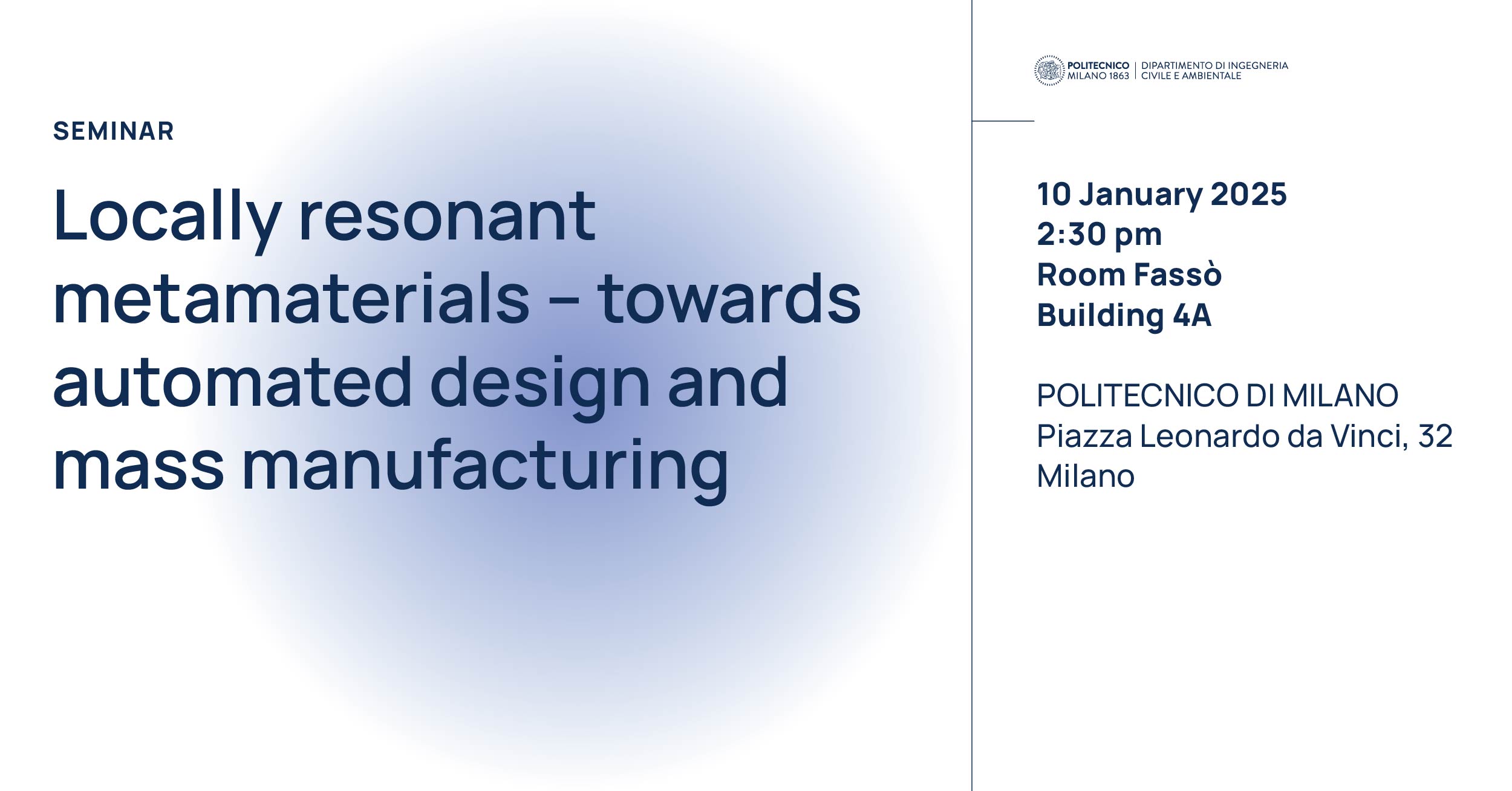
- This event has passed.
Locally resonant metamaterials – towards automated design and mass manufacturing
January 10 @ 14:30 - 17:00

On Friday, January 10th, a seminar will be held in the Fassò Lecture Hall (Building 4A) starting at 2:30 PM, titled:”Locally resonant metamaterials – towards automated design and mass manufacturing“.
The seminar will be conducted by Dott. Claus Claeys (Katholieke Universiteit Leuven).
Additionally, the seminar can be attended via Webex at the following link.
Abstract:
Metamaterials (MMs) have emerged as promising noise and vibration solutions which enable reconciling the often conflicting requirements of low mass and volume and high noise and vibration attenuation. Their superior performance arises from stop bands, being frequency ranges of strong noise and vibration reduction, which result from the addition or inclusion of locally resonant structures on or into a host structure on a sub-wavelength scale. Although their potential has been widely evidenced in a variety of (academic) demonstrators the manufacturing of MMs is far from mature while their performance is mostly limited to narrowband noise and vibration reduction. In view of merging the need for mass-manufacturable integrated MM solutions with the opportunity of broadening MM performance by embedding smart inclusions, the mass- production process injection moulding comes to the fore: a wide range of polymer products is currently already injection moulded, while the technology is particularly suitable to produce hybrid parts with embedded inclusions in a highly automated fashion through the process of insert moulding. Additionally, designs are commonly obtained on a trial-and-error basis or with expert knowledge. To automate this design process and obtain high performant metamaterial designs, optimization routines are important enablers. Topology optimization has shown its potential to achieve designs in many mechanical applications which outperform the state-of-the-art in terms of performance such as stiffness or strength, but also for noise insulation. Optimized structures are discussed in this presentation, together with first steps towards accounting for actual manufacturing constraints.
